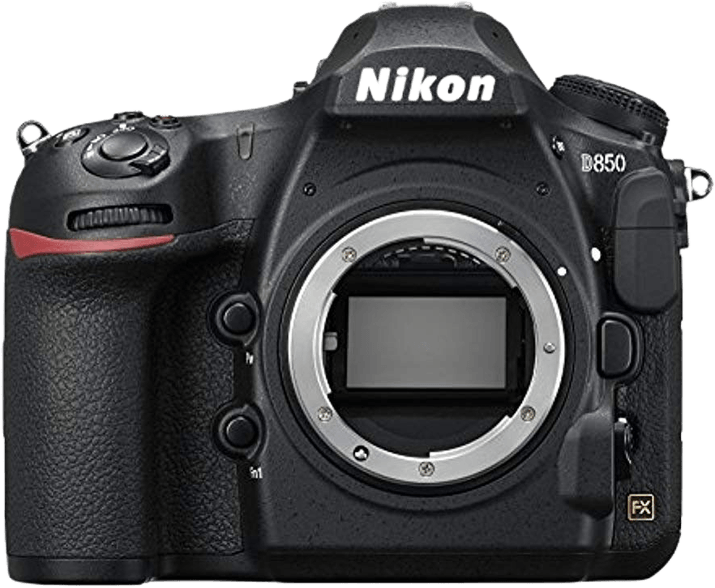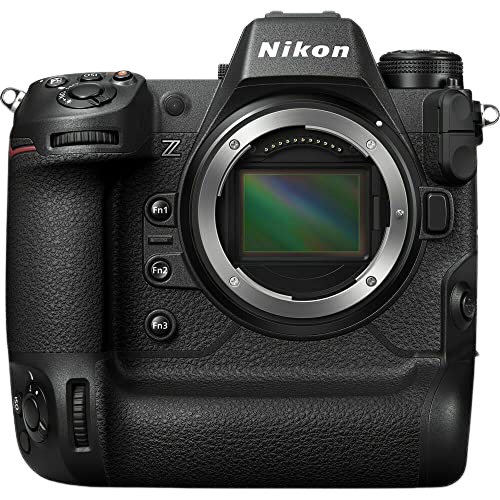Nikon D850 vs Z9 Comparison
Nikon D850

Nikon Z9

The Nikon Z9 takes the lead with a score of 87/100, while the Nikon D850 trails behind at 82/100. Both cameras share similarities in their brands and announcement dates, with the D850 being introduced in 2017 and the Z9 in 2021. The Z9’s higher score is due to its mirrorless design, which offers a more compact body measuring 149 x 150 x 91mm and weighing 1340g. This makes it easier to handle, despite its higher launch price of $5500 compared to the D850’s $3300.
The Nikon D850, as a DSLR, has a slightly smaller body at 146 x 124 x 79mm and weighs less at 1005g. While the D850 may be more affordable and lighter, the Z9’s superior performance and mirrorless design make it the better choice for photographers seeking cutting-edge technology and convenience.
Weighing the pros and cons, the Nikon Z9 outperforms the D850 in terms of technology and design. However, the D850 still holds its own with its lower price and lighter weight. Ultimately, the choice between the two cameras depends on the photographer’s priorities and budget.
Nikon D850 vs Z9 Overview and Optics
The Nikon Z9 outperforms the Nikon D850 in optics, scoring 88/100 compared to the D850’s 79/100. Both cameras share some specifications, such as having a CMOS sensor, a full-frame sensor size, and similar megapixel counts (46 for the Z9 and 45.7 for the D850). However, the Z9 has several advantages that contribute to its higher score.
The Nikon Z9 has a faster shooting speed of 30 frames per second (fps) compared to the D850’s 7 fps. This allows the Z9 to capture fast-moving subjects with more accuracy and precision. Additionally, the Z9 features the more advanced Expeed 7 processor, which results in improved image processing and overall performance. Although the D850 has a slightly higher DXOMARK sensor score of 100 compared to the Z9’s 98, the difference is negligible and does not affect the overall optics performance significantly.
The Nikon Z9 also has built-in image stabilization, which the D850 lacks. This feature is beneficial for reducing camera shake and producing sharper images, particularly in low light conditions or when using slower shutter speeds.
On the other hand, the Nikon D850 has the advantage of using the Nikon F FX lens mount, which has a larger selection of compatible lenses compared to the Nikon Z mount of the Z9. However, this advantage is less significant, as Nikon offers adapters allowing the use of F-mount lenses on Z-mount cameras.
In comparing the Nikon D850 and the Nikon Z9, the Z9’s faster shooting speed, advanced processor, and image stabilization make it the superior choice in optics. The D850’s advantage of a larger lens selection is mitigated by the availability of adapters, and its slightly higher DXOMARK sensor score does not significantly impact overall performance. The Nikon Z9 is the clear winner in terms of optics performance.
Nikon D850 vs Z9 Video Performance
The Nikon Z9 outperforms the Nikon D850 in video capabilities, scoring 100/100 compared to the D850’s 70/100. Both cameras share some common specifications, such as having built-in time-lapse functionality. However, the Z9 surpasses the D850 in terms of maximum video resolution and maximum video frame rate.
The Z9 boasts an impressive 8K maximum video resolution with dimensions of 7680 x 4320, doubling the D850’s 4K maximum video resolution of 3840 x 2160. This higher resolution results in significantly more detailed and sharper video quality, making the Z9 a superior choice for videographers and professionals who require high-resolution video capturing.
Additionally, the Z9 offers a maximum video frame rate of 120fps, four times the D850’s 30fps. This increased frame rate allows for smoother video playback and higher-quality slow-motion footage, providing more creative possibilities for filmmakers and content creators.
Despite the Nikon D850’s lower video score, it still offers reliable video performance with 4K resolution and 30fps. For users who do not require the highest video resolution or advanced frame rate options, the D850 remains a solid choice for capturing high-quality video content.
Comparing the video capabilities of the Nikon D850 and Nikon Z9, it is clear that the Z9 excels in both video resolution and frame rate, making it the superior choice for those in need of advanced video features. However, the D850 still offers respectable video performance for users who may not require the cutting-edge video capabilities of the Z9.
Nikon D850 vs Z9 Features and Benefits
The Nikon D850 and Nikon Z9 both score 87 out of 100 in terms of features, showcasing their strong capabilities as professional cameras. They share several specifications such as a 3.2-inch screen, touchscreen functionality, WiFi, and Bluetooth connectivity. However, there are differences that set them apart and make them suitable for different users.
The Nikon Z9 excels with its flip screen and GPS functionality. The flip screen allows greater flexibility when framing shots, particularly in challenging angles or when capturing self-portraits. Additionally, the GPS feature enables photographers to geotag their images, which is useful for travel and nature photography. These added features make the Z9 suitable for those seeking versatility in their shooting experience.
On the other hand, the Nikon D850 has a higher screen resolution of 2,359,000 dots compared to the Z9’s 2,088,960 dots. This results in a sharper and clearer image display, which can be beneficial for photographers who require precise focusing and image review. Despite its lack of a flip screen and GPS, the D850 remains a strong contender for those who prioritize image quality in their photography.
Both cameras are highly capable, and their identical feature scores reflect their competitive standing in the market. The Nikon Z9 is ideal for photographers who value flexibility and location-based features, while the Nikon D850 is better suited for those who prioritize image clarity on the camera’s screen. Ultimately, the choice between these two cameras depends on the specific needs and preferences of the photographer.
Nikon D850 vs Z9 Storage and Battery
The Nikon D850 wins in storage and battery with a score of 84/100, compared to the Nikon Z9’s score of 79/100. Both cameras have two memory card slots and accept SD/SDHC/SDXC (UHS-II compatible) and XQD cards. However, the Z9 also supports CFexpress cards, providing more storage options.
The D850 outperforms the Z9 in battery life, offering 1840 shots with its EN-EL15a battery, while the Z9 provides 740 shots using the EN-EL18d battery. This means the D850 lasts more than twice as long on a single charge, making it more reliable for extended shooting sessions.
On the other hand, the Z9 has the advantage of USB charging, allowing for easier and more convenient charging options, especially when traveling or in the field.
Considering these factors, the Nikon D850 is the better choice for photographers who prioritize longer battery life and reliable performance. However, the Nikon Z9 may be more appealing to those who value versatile charging options and additional storage compatibility with CFexpress cards.
Alternatives to the Nikon D850 and Z9
Are you still undecided about which camera is right for you? Have a look at these popular comparisons that feature the Nikon D850 or the Nikon Z9:

